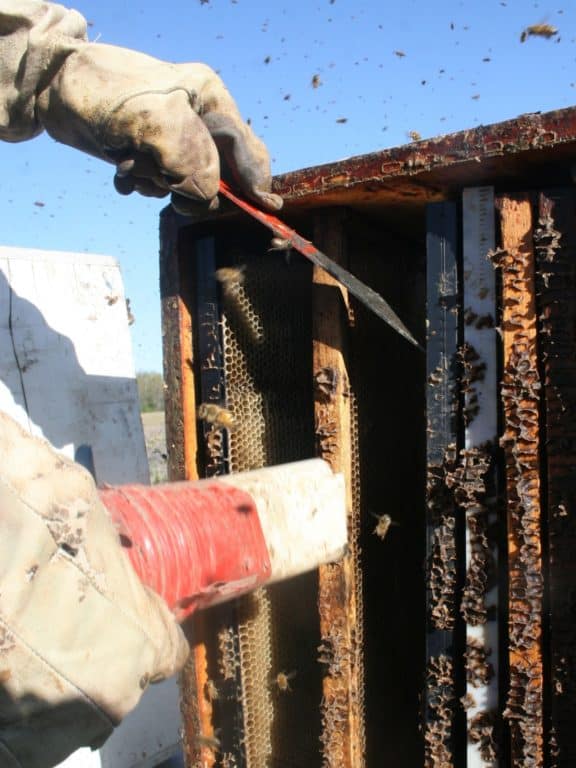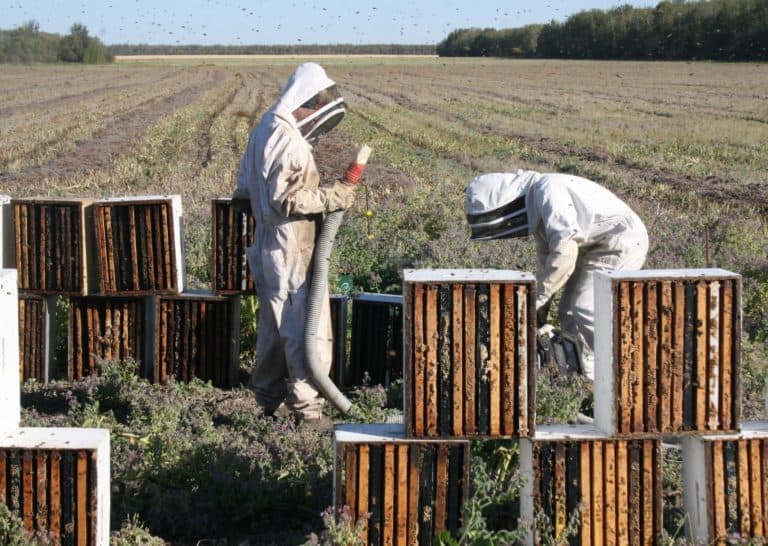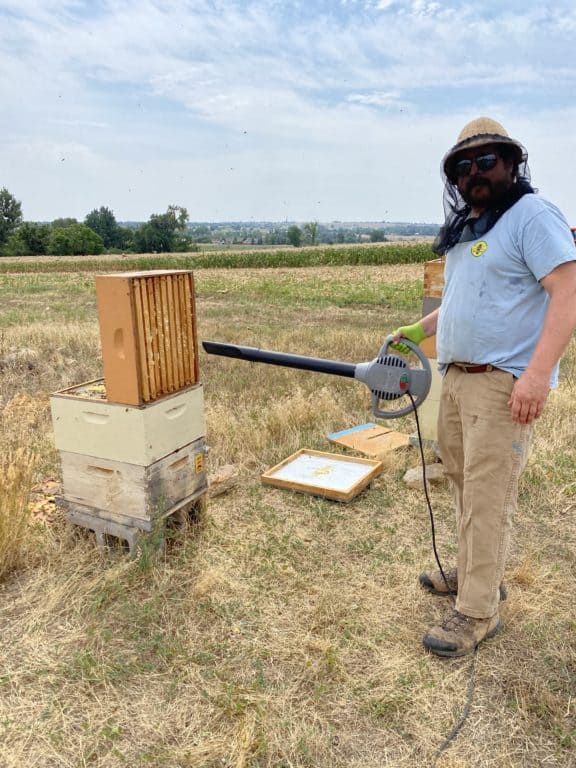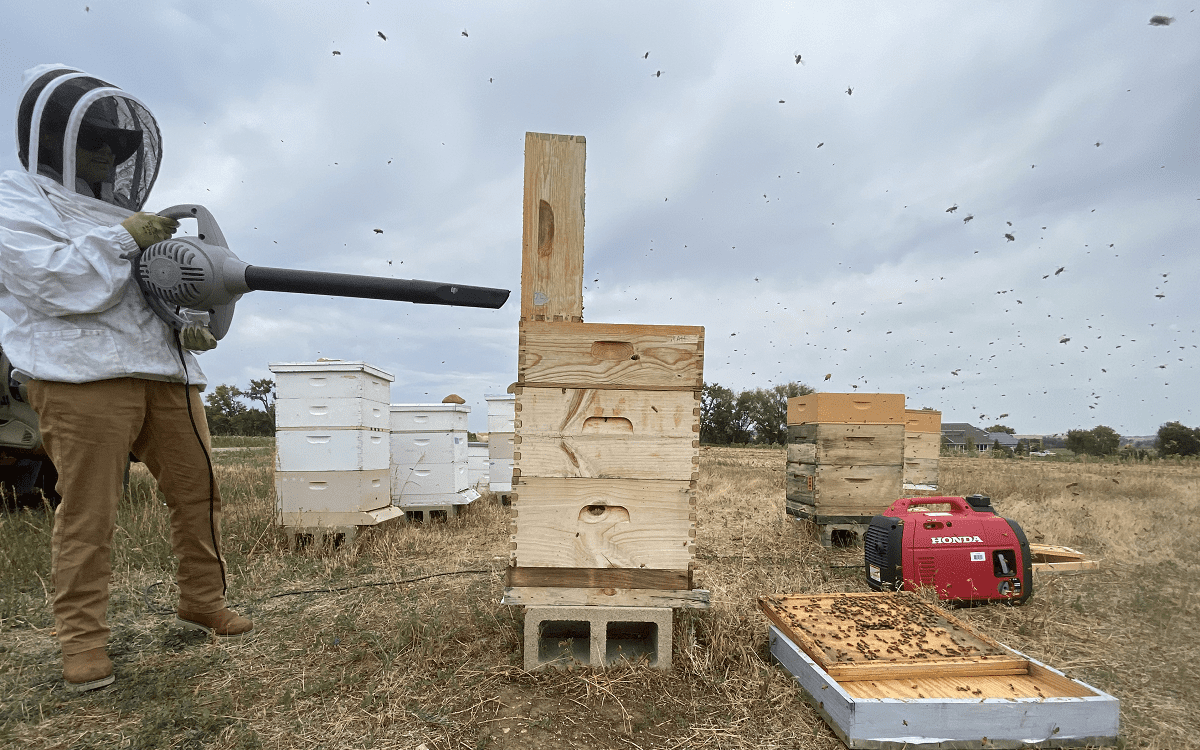Late summer is the time of year I start hearing about good honey crops. What most non-beekeepers do not realize is how much work goes into harvesting that honey. The first big step is to remove the bees from the honey supers. Beekeepers have several good choices for doing this task.
Shaking/Brushing
For hobbyists with a just few honey supers it may be easiest to shake and brush the bees off each frame back into the hive. Bring an empty super with a bee tight lid to put the brushed off frames in as you go along. You probably have a bee brush and an empty box already so the cost is zero.
Bee Escapes
Bee escapes work great if your bees are at home or you can make 2 visits to the out yard. Costs start at about $15 for a good triangle escape. For the hobbyist level beekeeper this is very reasonable, or you could even build your own. Read more about bee escapes here.
Fume Boards
Fume boards work by applying a strong smelling chemical (natural or not) to some foam on the underside of a lid or box, then placing it on the supers to drive the bees down. Fume boards cost about the same as an escape but add another $15 for the chemicals. It can be done in one visit, but I’m not gonna lie: Fume boards are my least favorite way to clear out supers.

Blowing Out Bees
Most commercial operations blow out the bees with gas powered blowers as it is the most efficient, but blowing out bees may be a good option for hobbyists as well. Gas powered leaf blowers start at about $100. Even a less expensive electric leaf blower used with a generator or inverter can work well too, which is what I did in the video below. The more power the better though; lower powered setups will work but take much longer. If you have a lower powered blower, then a better option might be to use bee escapes in combination with your blower.
Video: https://youtu.be/N6lfVbcpAvA
In the picture below, the nectar flow was very strong, so robbing was not a problem. This allowed the commercial beekeepers to stack up supers and blow them out very efficiently. It is not uncommon, however, for robbing to be a big problem during honey harvest. Keeping bee tight lids on your stack of blown out supers helps. Using a screened lid seems to help as they go to the top and will fly out when you add your next super to the stack.

When blowing out bees there is often burr comb in the way creating pockets where the bees do not get blown out very easily. If you have hundreds of supers to pull, then just move those frames apart so you can better blow them out and and get the job done. The person extracting can deal with the sticky mess later. If you have fewer supers and you’re extracting them yourself, then take your time. Clean the burr comb out between the top bars without moving them. Try not to scrape or break any honey laden burr comb if you do move frames apart. It’s more enjoyable extracting honey if it is not already running out everywhere you do not want it. Also, avoid blowing dirt into your supers by keeping them off the ground. Put the super on a raised bee chute, or just tip it on end where it is on the hive. If there is a good flow then you can do it all while wearing your BIP t-shirt and pocket veil without getting stung even once. Clearing out supers this way is my favorite way to do it.

